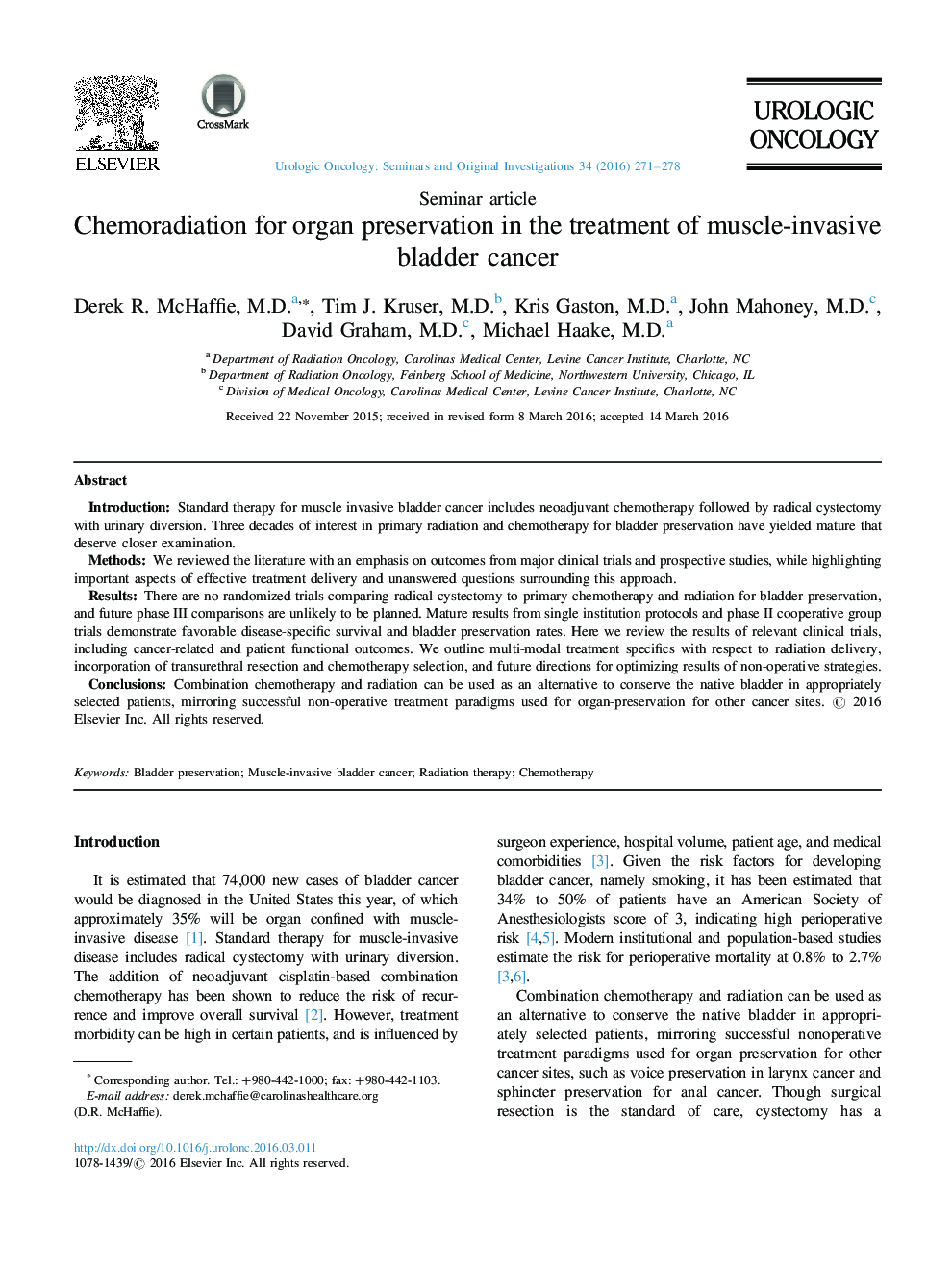| Article ID | Journal | Published Year | Pages | File Type |
|---|---|---|---|---|
| 3999589 | Urologic Oncology: Seminars and Original Investigations | 2016 | 8 Pages |
•Multidisciplinary collaboration is essential for effective bladder preservation.•Concurrent chemotherapy and radiation yield the most favorable results.•The rate of bladder preservation is approximately 80% at 5 years.•No randomized data are available comparing this approach to radical cystectomy.
IntroductionStandard therapy for muscle invasive bladder cancer includes neoadjuvant chemotherapy followed by radical cystectomy with urinary diversion. Three decades of interest in primary radiation and chemotherapy for bladder preservation have yielded mature that deserve closer examination.MethodsWe reviewed the literature with an emphasis on outcomes from major clinical trials and prospective studies, while highlighting important aspects of effective treatment delivery and unanswered questions surrounding this approach.ResultsThere are no randomized trials comparing radical cystectomy to primary chemotherapy and radiation for bladder preservation, and future phase III comparisons are unlikely to be planned. Mature results from single institution protocols and phase II cooperative group trials demonstrate favorable disease-specific survival and bladder preservation rates. Here we review the results of relevant clinical trials, including cancer-related and patient functional outcomes. We outline multi-modal treatment specifics with respect to radiation delivery, incorporation of transurethral resection and chemotherapy selection, and future directions for optimizing results of non-operative strategies.ConclusionsCombination chemotherapy and radiation can be used as an alternative to conserve the native bladder in appropriately selected patients, mirroring successful non-operative treatment paradigms used for organ-preservation for other cancer sites.
